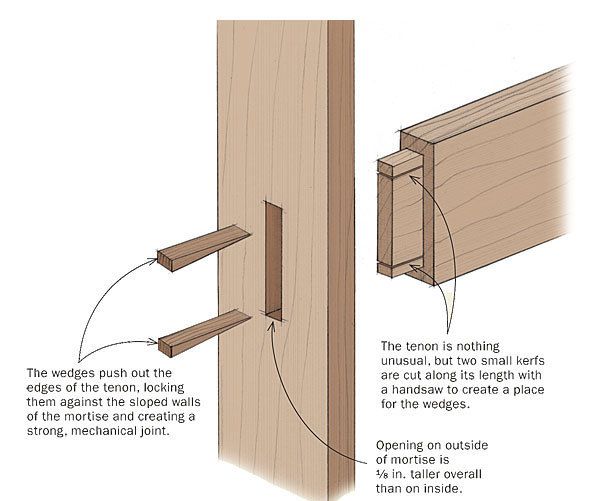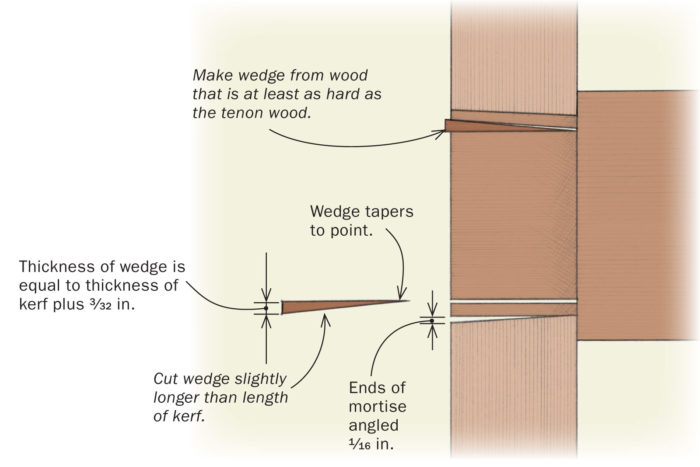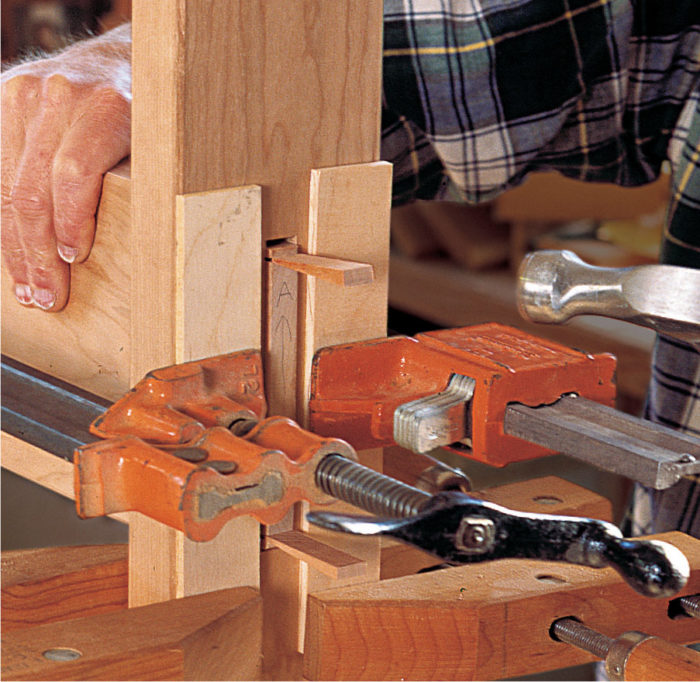
Q:
Dustin Jackson, Pocatello, ID
A:
Use a morrtise with sloped walls, because the resulting joint has a mechanical advantage over one made with a straightwalled mortise. By wedging the tenon, pushing its sides out and against the sloped walls of the mortise, you essentially create a dovetail, which locks the tenon into the mortise. However, if the mortise walls are left straight, then the wedge simply creates an extremely tight-fighting tenon.
When it comes to sloping the walls and making the tenon, I don’t fuss with angles in degrees. Rather, I make the outside opening of the mortise 1⁄8 in. longer than the inside opening. The walls on the inside just slope from the longer opening to the shorter one. I then use a handsaw to cut a kerf 1⁄8 in. from each edge of the tenon. The wedges should be as wide as the tenon and a hair longer than the kerf. At the fat end, their thickness is equal to the thickness of the kerf plus 3⁄32 in. (1⁄16 in. for the extra length at both ends of the mortise opening and 1⁄32 in. for fiber compression, which really locks in the joint).


Put the squeeze on. After applying glue, clamp the tenon in place so it doesn’t move while you hammer in the wedges. Put glue in the sawkerfs too, to lock in the wedges.
Fine Woodworking Recommended Products

Leigh D4R Pro

Veritas Precision Square

Festool DF 500 Q-Set Domino Joiner























Log in or create an account to post a comment.
Sign up Log in